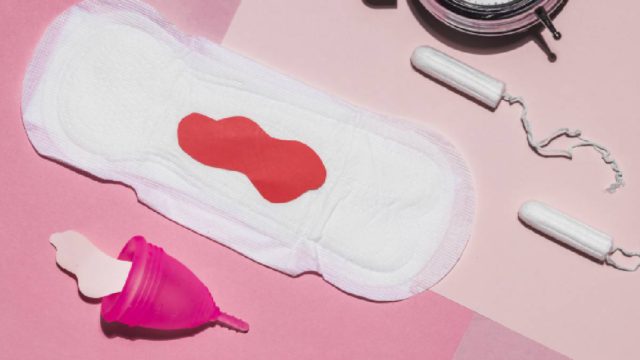Experiencing bleeding between your monthly menstrual cycle confusing aur alarming ho sakta hai. But this phenomenon, known as spotting, is quite common and could occur owing to several reasons including hormonal imbalance, infections, STDs, and premenopause to name a few.
Moreover, spotting can be confusing. You may think you have started with your periods and stock up on your menstrual hygiene products only to discover that this is not the case. Unlike periods, spotting between periods does not involve a lot of blood flow and can be managed without using a pad or tampon.
The best way to deal with spotting is to equip yourself with the right information. Read on to find out what is spotting, why it happens and how it is different from your regular period.
4 Types Of Bleeding Between Periods
Bleeding between periods is more common than you think. Here are a few types of bleeding that women may experience during non-period days.
1. Light Bleeding
This occurs right before or right after your period. Light bleeding is actually a part of your period.
2. Spotting
What does spotting look like? Have you ever found a drop of blood on your underpants or just a little smudge of blood on your toilet paper? This could be a sign of spotting before period. You do not really need to use a tampon or a pad for spotting.
3. Abnormal Bleeding
Abnormal uterine (or vaginal) bleeding is any heavy bleeding that occurs when you are not on your period. You may need to use a tampon or a pad for this. This does not occur due to hormonal birth control medication.
4. Breakthrough Bleeding
Unlike abnormal bleeding, breakthrough bleeding occurs if you are on oral contraceptives, most likely triggered by low oestrogen levels.
4 Differences Between Spotting & Periods
Wondering how to tell the difference between spotting and periods? Let us help you out!
- So what does spotting look like? Period bleeding is heavier and lasts for several days. You need to use a pad, tampon or a menstrual cup for it. On the other hand, spotting can be managed without using any of these products as the amount of blood is pretty low.
- Most women have an idea when their menstrual cycle will begin. It can be a few days late or a few days earlier than you expected. Spotting between periods, on the other hand, occurs off cycle.
- The blood that appears during spotting is of a lighter colour than the blood that is produced during the period.
- Spotting isn’t usually accompanied by symptoms like cramping, bloating, mood swings or breast tenderness. These menstrual symptoms, however, are quite normal right before or during your period.
8 Causes Of Spotting Between Periods
Now that you know what is spotting, let’s take a look at a few causes that may trigger it. Spotting between periods is not an uncommon experience. And in most cases, it’s usually not a cause of concern. Here are a few reasons why you might be experiencing spotting between your menstrual cycle.
- Hormone-based contraceptives are one of the major causes of spotting. Spotting during the first 3 months of using hormone-based birth control may occur due to changes in the lining of your uterus (caused by extra hormones).
- Infection of the cervix
- Sexually transmitted diseases like chlamydia
- Premenopause
- Health conditions like blood clotting disorders, liver disease, chronic kidney disease or hypothyroidism
- Polyps or fibroids
- Polycystic ovary syndrome (PCOS)
- Other causes of spotting also include certain types of cancers
When To Contact The Doctor?
While in most cases, spotting does not require immediate medical attention, it might be a good idea to get in touch with your doctor if you are experiencing prolonged spotting symptoms or aren’t sure what is causing it. A visit to your medical expert and getting proper spotting treatment are necessary for the following situations:
- If you get more than 1 period in a month
- If you experience light-headedness or dizziness during the day
- If spotting occurs after menopause
- If you experience lower abdominal pain or cramping
- If you are experiencing fever, pain in the lower abdomen and cramping along with spotting
- If spotting occurs during pregnancy
- If the spotting symptoms happen more frequently or are getting worse
- If you are experiencing persistent and prolonged bleeding (in between your periods)
9 Tips To Prevent Spotting
These general prevention tips can help you prevent spotting:
- Maintain a healthy weight and take a healthy diet to reduce the chances of hormonal imbalance.
- Avoid overdoing physical exercises and intense workouts as these may also cause spotting and discharge in some cases.
- Make sure you follow the doctor’s prescription and advice while taking contraceptives.
- Continue taking the pills regularly even if you experience some spotting. The body may take about 5 months to adjust to the pill completely.
- Make sure to take the pill at the same time daily. This will help maintain consistency in the body’s hormone levels.
- If spotting continues even after 6 months, you may need to change your birth control pill.
- Consume iron-rich food items to keep anaemia at bay. If you are anaemic, your body will not have enough menstrual blood to flow each month. This may result in period spotting.
- Do yoga and meditation to relieve stress and avoid hormonal imbalances.
- You can also research and try out certain home remedies for spotting that a lot of women swear by. To be sure, consult with your doctor before trying out a new remedy.
Spotting is neither a disease nor a disorder and doesn’t have a fixed course of medication. In fact, by taking a few simple measures you can prevent spotting. If you are experiencing any other symptoms with spotting, consult your doctor and seek their advice.
Open up like never before and participate in conversations about beauty, entrepreneurship, mental health, menstrual & sexual health, and more. Desi women, join our community NOW!



